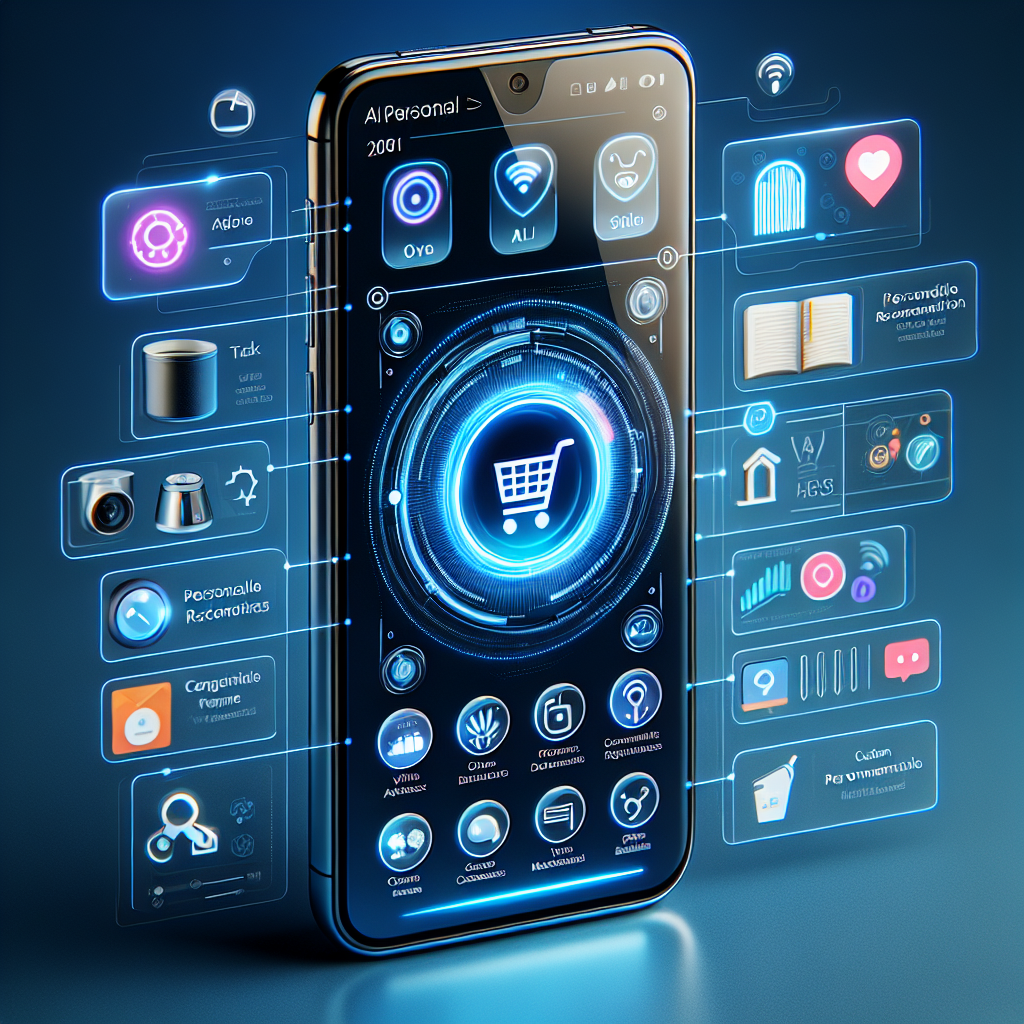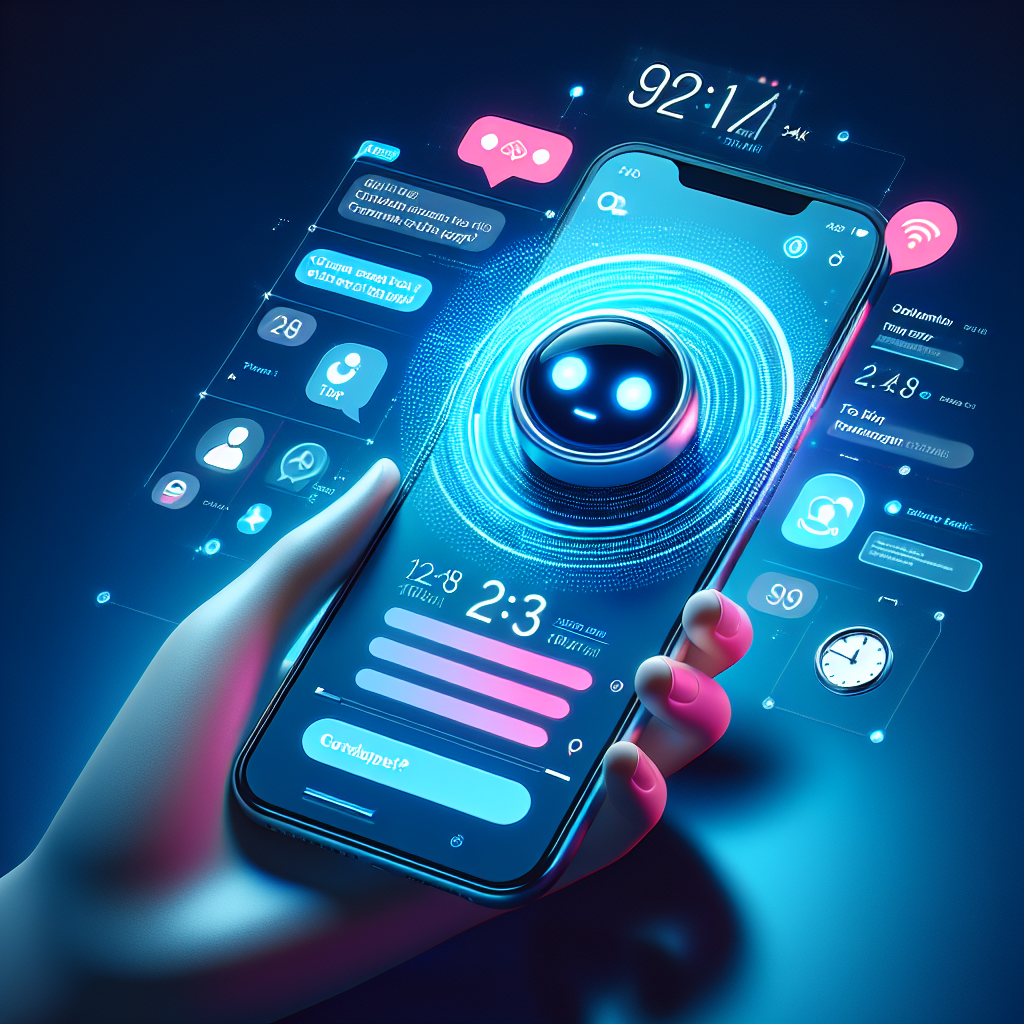If you’re looking for the best tools to develop AI chatbots that can engage in dynamic conversations, then this article is for you. In this comprehensive guide, we’ll explore some of the top chatbot development tools available, offering viable alternatives to ChatGPT. Whether you’re a beginner or an experienced developer, these tools will provide you with the functionality and flexibility needed to create intelligent and interactive chatbot experiences. So, let’s dive in and discover the perfect chatbot development tool for your AI conversations.
Understanding Chatbots and AI Conversations
Chatbots have become increasingly popular in recent years, transforming the way businesses interact with their customers. But what exactly is a chatbot? Simply put, a chatbot is an artificial intelligence (AI) software designed to simulate human conversation. It uses natural language processing (NLP) to understand and respond to user queries, providing an interactive and personalized experience.
Defining Chatbots
Chatbots are computer programs that are programmed to mimic human conversation and interaction. They can be used in various applications, such as customer service, ordering processes, interactive marketing, and data collection. The key to a successful chatbot lies in its ability to understand and respond to user queries accurately and efficiently.
Basics of AI Conversations
AI Conversations involve the use of artificial intelligence to understand and respond to user queries and requests. By using machine learning algorithms and advanced NLP techniques, chatbots can provide human-like responses and adapt to the user’s needs. AI conversations are driven by algorithms that can analyze and understand vast amounts of data to generate intelligent and contextually appropriate responses.
Benefits of Integrating AI in Chatbots
Integrating AI in chatbots brings numerous benefits to both businesses and users. For businesses, AI-powered chatbots can automate customer service, streamline the ordering process, engage customers through interactive marketing, and collect valuable data for analytics. This improves efficiency, reduces costs, and enhances the overall customer experience.
For users, AI chatbots provide instant and personalized assistance, allowing them to get the information they need quickly and conveniently. With AI integration, chatbots can understand and interpret natural language, making the interaction more human-like and effortless.
Popular Use Cases of AI Chatbots
Chatbots have found their way into various industries and sectors, and their applications are vast. Here are some popular use cases of AI chatbots:
Customer Service
One of the most common applications of chatbots is in customer service. Chatbots can handle a wide range of customer queries, providing instant responses and solutions. They can assist with general inquiries, troubleshooting, product recommendations, and even process transactions. This frees up human customer service agents to focus on more complex or specialized tasks, improving response times and overall customer satisfaction.
Ordering Process
AI chatbots are also widely used in the ordering process. Whether it’s for food delivery, eCommerce, or booking services, chatbots can handle the entire ordering process, from product selection to payment. By integrating with databases and payment gateways, chatbots can process orders efficiently and accurately, eliminating the need for manual input and reducing errors.
Interactive Marketing
Chatbots have revolutionized interactive marketing by providing personalized and engaging experiences for users. Through targeted messaging, chatbots can deliver relevant content, promotions, and recommendations based on user preferences. This not only enhances user engagement but also increases conversion rates and ROI for businesses.
Data Collection
AI chatbots are excellent tools for data collection. By engaging in conversations with users, chatbots can gather valuable insights and feedback, which can be used to improve products, services, and marketing strategies. Chatbots can collect demographic data, user preferences, and even sentiment analysis, providing businesses with valuable information for decision-making and driving business growth.
Key Components of AI Chatbot Development
Developing an AI chatbot involves several key components that enable it to understand and respond to user queries effectively. Here are the essential components of AI chatbot development:
Natural Language Processing (NLP)
NLP is a critical component of AI chatbots. It enables the chatbot to understand and interpret natural language, allowing it to comprehend user queries and generate relevant responses. NLP algorithms analyze sentence structure, grammar, and semantics to extract meaning from user input, making the conversation more seamless and human-like.
Machine Learning Algorithms
Machine learning algorithms play a vital role in chatbot development. These algorithms allow the chatbot to learn and improve over time by analyzing user interactions and data. Through machine learning, chatbots can adapt to user preferences, understand context, and provide more accurate responses with each conversation.
Text-to-Speech and Speech-to-Text Conversion
Text-to-speech and speech-to-text conversion capabilities are essential for chatbots that support voice interactions. These features enable the chatbot to convert text into spoken words and vice versa, facilitating a more versatile and inclusive user experience. Users can interact with the chatbot using voice commands, making the conversation more natural and convenient.
Database Management
Effective database management is crucial for AI chatbot development. Chatbots need access to relevant data to provide accurate and up-to-date information to users. By integrating with databases, chatbots can retrieve and store information, such as product inventories, customer profiles, and transaction history. This ensures that the chatbot has access to the most relevant information to deliver tailored responses.
Alternatives to ChatGPT for AI Chatbot Development
While ChatGPT is a popular choice for AI chatbot development, there are alternative tools worth considering. These alternatives offer different features and capabilities that may better suit specific project requirements. Here are some reasons to consider alternatives and the pros and cons of using ChatGPT:
Why consider alternatives
Although ChatGPT is a powerful language model, it may not be the best fit for every chatbot project. Alternatives often provide different features and customization options that can address specific project requirements more effectively. Considering alternatives allows developers to explore different tools and platforms to find the best solution for their needs.
Pros and cons of using ChatGPT
ChatGPT offers several advantages, such as its large pre-trained model, which allows it to generate coherent and contextually relevant responses. It has a strong foundation in natural language understanding, making it suitable for a wide range of conversational applications. However, it also has limitations, such as a lack of control over generated responses and the potential for biased or inappropriate output.
Microsoft Azure Bot Service
Microsoft Azure Bot Service is a comprehensive platform for building, deploying, and managing AI chatbots. It offers a wide range of features and capabilities to simplify the development process and create powerful conversational experiences. Here’s an overview of Microsoft Azure Bot Service:
Overview of Microsoft Azure Bot Service
Microsoft Azure Bot Service provides developers with the tools and resources necessary to create intelligent chatbots across multiple channels, including websites, messaging platforms, and voice assistants. It offers a visual interface for building chatbot dialogs and integrates with Azure Cognitive Services for advanced AI capabilities.
Features and Capabilities
Microsoft Azure Bot Service includes various features and capabilities that enhance chatbot development. It offers a rich set of pre-built templates, language understanding models, and conversational flow tools, enabling developers to create conversational experiences quickly. It also supports seamless integration with other Azure services, such as Azure Functions and Azure App Service, for enhanced functionality and scalability.
Comparison with ChatGPT
Compared to ChatGPT, Microsoft Azure Bot Service provides a more comprehensive and customizable platform for chatbot development. It offers a visual interface, pre-built templates, and integration with Azure Cognitive Services, allowing for easier and more efficient development. However, ChatGPT’s pre-trained model may provide more coherent and contextually relevant responses out-of-the-box.
Dialogflow from Google Cloud
Dialogflow, powered by Google Cloud, is a popular platform for building AI chatbots and conversational agents. It offers a range of unique features and strengths that make it a top choice for many developers. Here’s an introduction to Dialogflow:
Introduction to Dialogflow
Dialogflow is a natural language understanding platform that allows developers to build conversational interfaces across various platforms, including websites, mobile apps, and messaging platforms. It utilizes Google’s advanced machine learning algorithms to understand and interpret user input and generate appropriate responses.
Unique Features and Strengths
Dialogflow offers several unique features that set it apart from other AI development tools. One of its notable strengths is its support for multi-platform deployment, allowing developers to create consistent conversational experiences across multiple channels. It also provides pre-built agent templates and integration with other Google Cloud services, such as Google Cloud Speech-to-Text and Google Cloud Text-to-Speech.
How it compares with other AI development tools
When compared to other AI development tools, Dialogflow stands out for its ease of use and seamless integration with other Google Cloud services. Its comprehensive set of features, including entity extraction, intent recognition, and context management, makes it a versatile choice for building AI chatbots. However, some developers may prefer other tools for their specific project requirements or customization options.
IBM Watson Assistant
IBM Watson Assistant is a powerful AI tool for building conversational agents and chatbots. Leveraging IBM’s cutting-edge AI technologies, Watson Assistant offers unique advantages and addresses specific development needs. Here’s an insight into IBM Watson Assistant:
Insight into IBM Watson Assistant
IBM Watson Assistant is designed to help businesses create conversational experiences that understand natural language, adapt to user needs, and integrate with various backend systems. It provides a visual dialog creation interface and supports advanced features such as context management, machine learning, and integration with external APIs.
Advantages and Limitations
IBM Watson Assistant offers several advantages that make it a top choice for chatbot development. Its powerful natural language understanding capabilities, combined with its machine learning algorithms, enable accurate interpretation of user queries and generation of contextually relevant responses. Moreover, Watson Assistant allows for seamless integration with other IBM Watson services, providing a comprehensive AI solution.
However, one limitation of IBM Watson Assistant is its reliance on Watson services, which may incur additional costs. Additionally, some developers may find the learning curve for using Watson Assistant to be steeper compared to other development tools.
Chatfuel
Chatfuel is a popular chatbot development platform that allows businesses to build AI chatbots without coding. It offers a user-friendly interface and various features for creating conversational experiences. Here’s an understanding of Chatfuel:
Understanding Chatfuel
Chatfuel is an intuitive chatbot development platform, primarily used for creating chatbots on Facebook Messenger. It employs a graphical interface and a drag-and-drop system, enabling users to build chatbots without writing a single line of code. Chatfuel simplifies the chatbot development process, making it accessible to individuals and businesses without extensive technical knowledge.
Role of Chatfuel in Chatbot Development
Chatfuel plays a significant role in simplifying the chatbot development process. Its drag-and-drop interface allows users to create conversational flows, define responses, and integrate with external services effortlessly. It also offers various templates and plugins to enhance chatbot functionality, such as broadcasting messages, collecting user data, and handling e-commerce transactions.
Comparison of Chatfuel with other AI tools
When compared to other AI development tools, such as Dialogflow or IBM Watson Assistant, Chatfuel stands out for its user-friendly interface and ease of use. However, it may have limitations in terms of customization options and advanced AI capabilities. Businesses with more complex chatbot requirements or specific integration needs may find other tools more suitable.
Botsify
Botsify is a chatbot development platform that focuses on creating AI chatbots with rich conversational capabilities. It offers a variety of features and benefits for businesses looking to develop advanced chatbots. Here’s an overview of Botsify:
Overview of Botsify
Botsify is a versatile chatbot development platform that allows businesses to build AI chatbots for various platforms, including websites, Facebook Messenger, and WhatsApp. It offers a user-friendly interface and provides features like visual flow builder, AI training, multiple channel integration, live chat integration, and customer support automation.
Usage and Benefits
Botsify caters to businesses of all sizes, enabling them to create chatbots that can handle customer support, lead generation, FAQs, appointment scheduling, and more. Its visual flow builder simplifies the chatbot development process, allowing businesses to create conversational flows without technical expertise. Botsify also offers analytics and reporting features, providing valuable insights into chatbot performance and user engagement.
Comparison with other development tools
Compared to other development tools, Botsify offers a user-friendly interface and extensive integration capabilities. Its focus on conversational capabilities and customer support automation sets it apart. However, businesses with complex AI requirements or specific customization needs may find other tools more suitable.
Future Trends in AI Conversational Chatbots
The future of AI conversational chatbots holds exciting possibilities for enhancing user experiences and enabling more advanced interactions. Here are some trends to look out for:
Improving Natural Language Understanding
Advancements in natural language processing and machine learning algorithms will lead to better chatbot understanding and interpretation of user queries. Chatbots will become more context-aware, allowing for more accurate and contextual responses.
Incorporating Emotion Detection
Incorporating emotion detection capabilities in chatbots will enable them to understand and respond to user emotions. This will create more personalized and empathetic interactions, enhancing the overall user experience.
Advancements in Voice Recognition
Voice recognition technology will continue to improve, allowing chatbots to understand and respond to spoken commands more accurately. This will enable conversational interactions through voice assistants and other voice-enabled devices.
Integration with IoT and Other Technologies
As chatbots become more intelligent, they will integrate with IoT devices and other technologies, allowing for seamless interactions across multiple platforms. This integration will enable chatbots to provide personalized recommendations, perform tasks, and control connected devices.
In conclusion, understanding chatbots and AI conversations is essential for businesses looking to enhance customer experiences and streamline processes. By integrating AI in chatbots, businesses can automate customer service, improve the ordering process, engage customers through interactive marketing, and collect valuable data. With the right tools and platforms, such as Microsoft Azure Bot Service, Dialogflow, IBM Watson Assistant, Chatfuel, and Botsify, businesses can develop powerful AI chatbots that provide personalized and efficient interactions. Looking ahead, future trends in AI conversational chatbots will focus on improving natural language understanding, incorporating emotion detection, advancing voice recognition, and integrating with IoT and other technologies.



